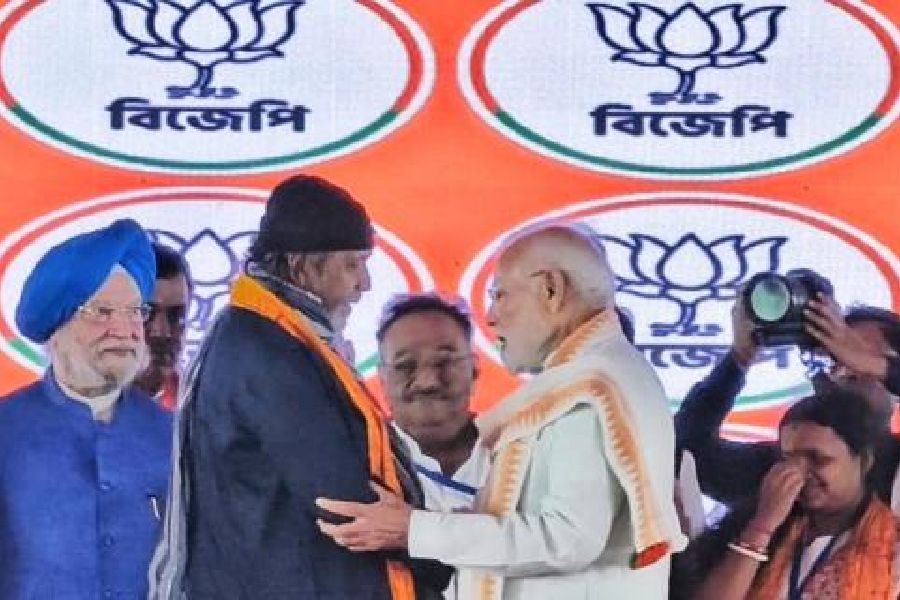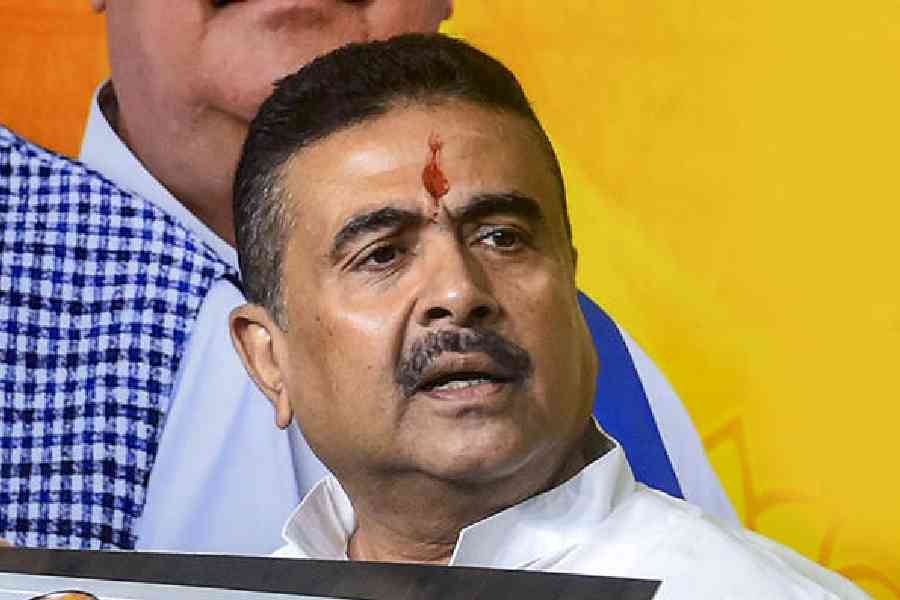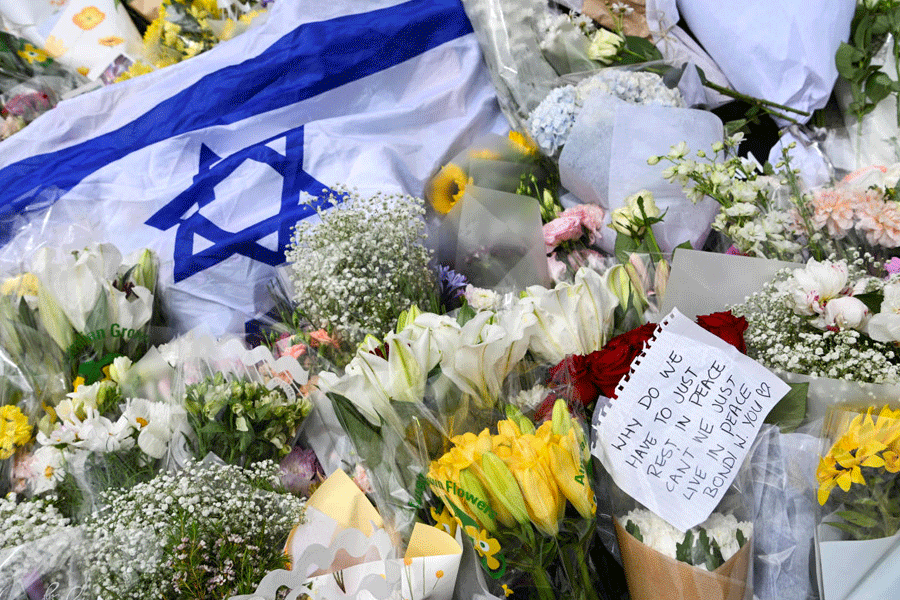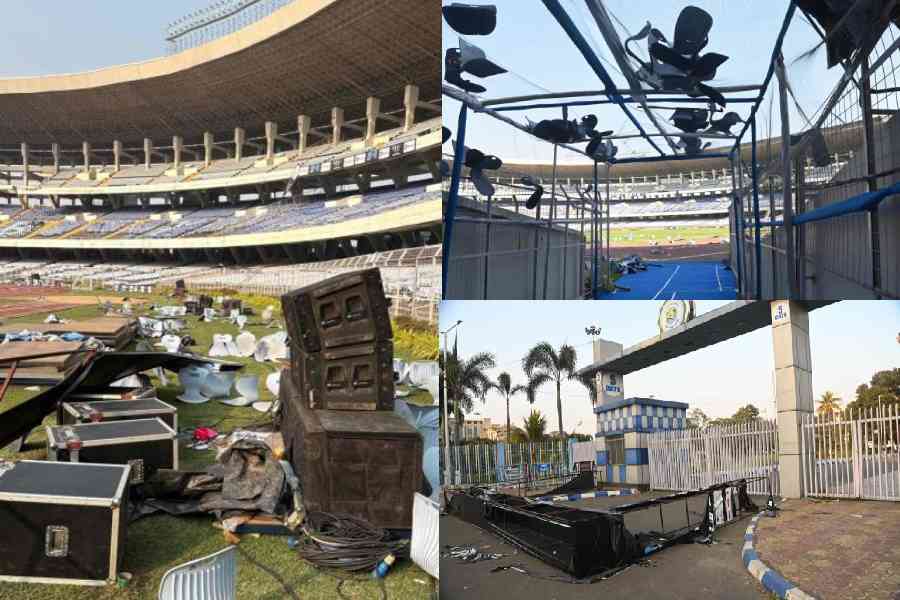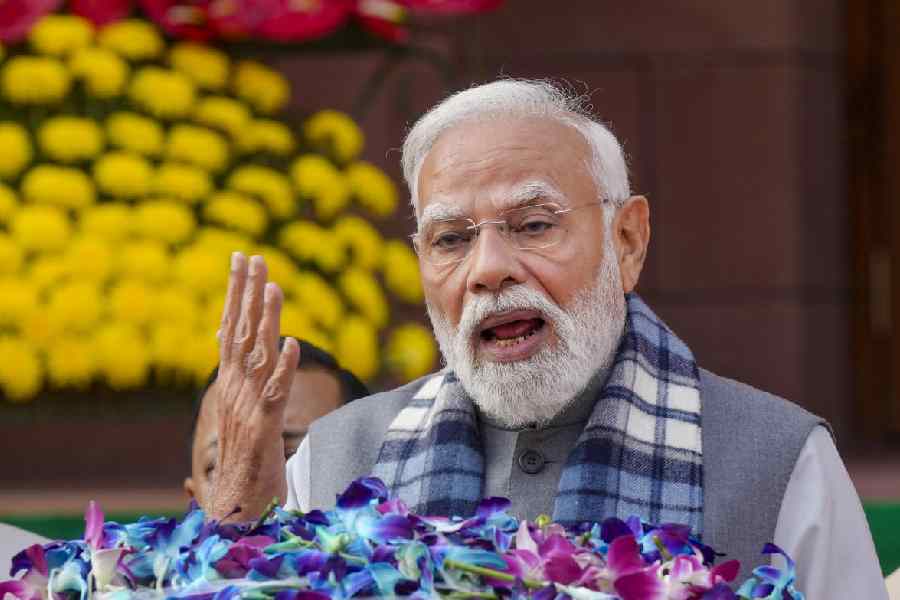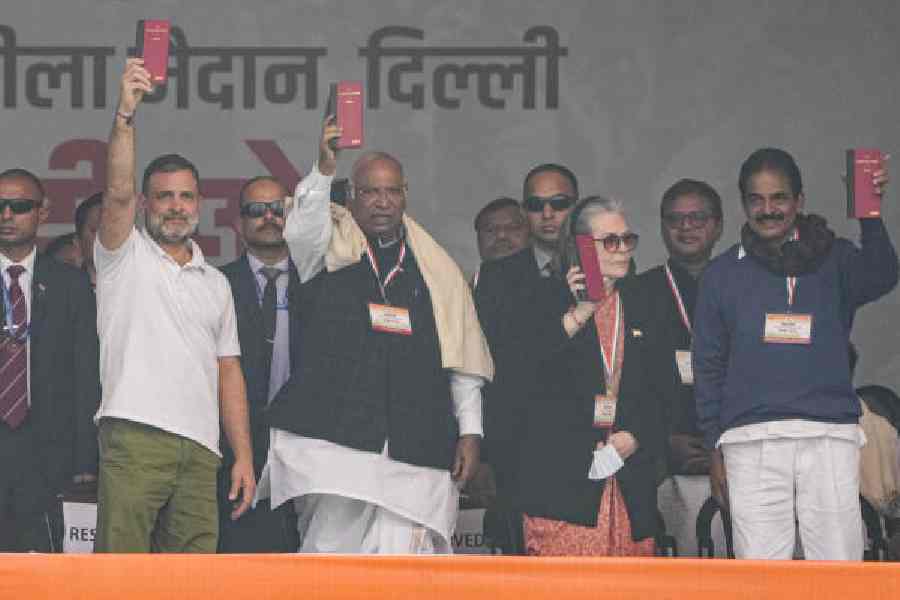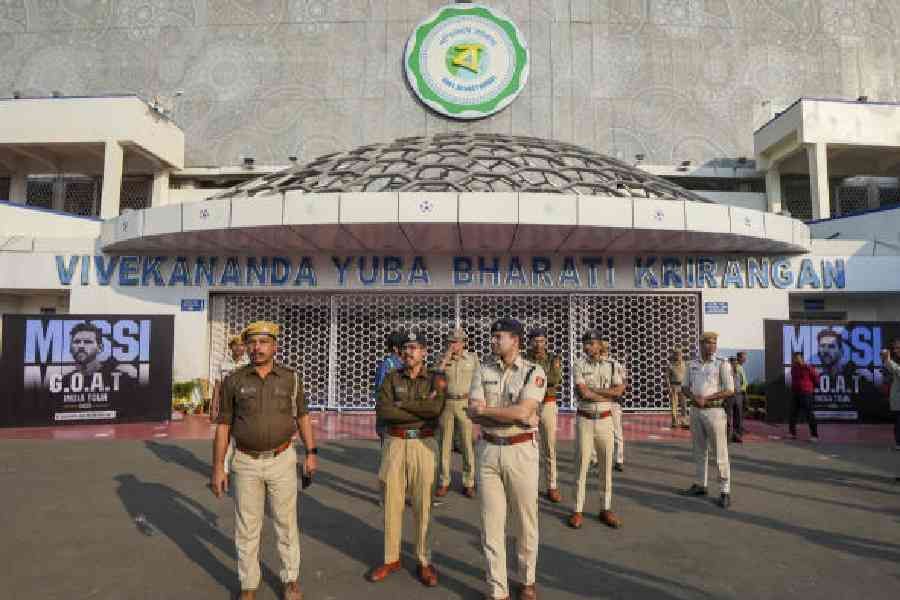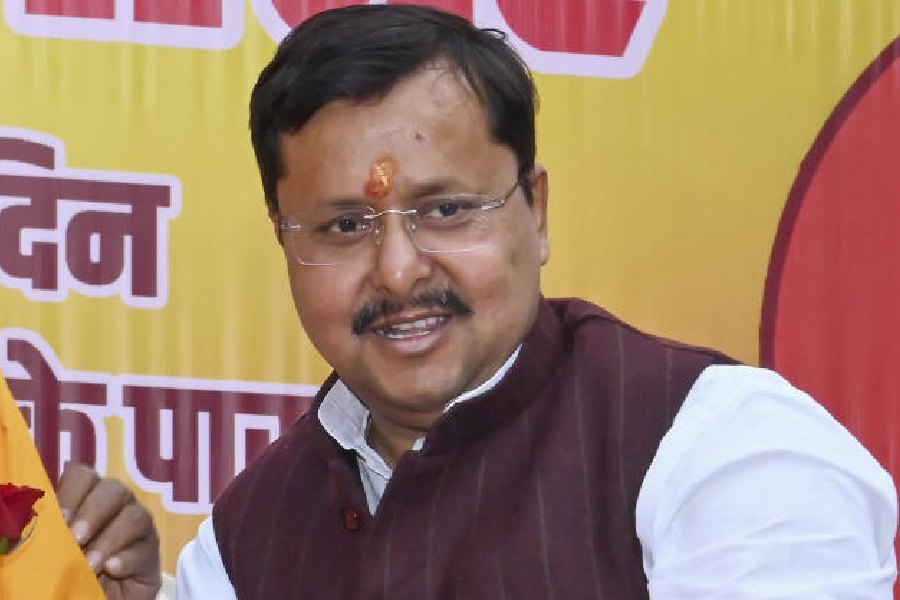When in Rome, do as the Romans do.
Prime Minister Narendra Modi on Friday lived up to the adage by not chanting the usual war cry — “Jai Shri Ram” — at his rally in Durgapur, but by beginning his speech with “Jai Maa Kali” and “Jai Maa Durga,” to establish a better connection with Bengal’s religious culture rather than relying on north India-rooted slogans.
“Bharat Mata ki Jai. I pay my pranam to the elders and love to the younger ones. Jai Maa Kali, Jai Maa Durga,” Modi said at the Paribartan Sankalpa Sabha in Durgapur on Friday evening.
Invitation cards printed by the local BJP leadership in Durgapur had “Jai Maa Kali” and “Jai Maa Durga” rather than “Jai Shri Ram”.
Even during his previous visit to Alipurduar on May 29, when he participated in back-to-back government and political events, Modi did not mention the names of goddesses Kali and Durga. This shift drew attention from several BJP leaders, who felt that Modi’s speech on Friday was entirely Bengal-centric, highlighting the region’s religious and cultural ethos, which the party has struggled to capture in recent years.
“‘Jai Shri Ram’ has become a staple slogan at all our events, and Modi ji had used it in most of his political rallies. But what struck us this time was Modi ji’s chant of ‘Jai Maa Kali’ and ‘Jai Maa Durga,’ which resonates more with Bengal,” said a BJP leader.
Modi’s invocation of Kali and Durga came in the backdrop of the July 3 accession ceremony of the new Bengal BJP president, Samik Bhattacharya, in Calcutta, where the goddess Kali of Kalighat took centre stage.
On Friday, both state president Samik Bhattacharya and the leader of the Opposition, Suvendu Adhikari, felicitated Modi with idols of Durga.
Bhattacharya gifted a famous terracotta Durga idol from Bankura, while Adhikari presented a metal idol of the same deity.
Locket Chatterjee, BJP MP from Hooghly and the event’s anchor, said while introducing the leaders: “Our state president, Shamik Bhattacharya, will welcome Modi ji with a garland of Rajanigandha and a terracotta Durga idol, keeping the pride of Bengal intact.”
Typically, BJP events have followed the tradition of welcoming national leaders like Modi or Union home minister Amit Shah with large garlands of lotus and yellow or
saffron marigold.
“If you’re observing changes, then you must note the inclusion of Rajanigandha garlands,” said a BJP leader.
The BJP’s efforts to become Bengal’s party became more apparent after the national leadership appointed Samik Bhattacharya — one who is considered to be a representative of Bengal’s educated middle class — as the state president earlier this month. Since his appointment, several changes have been introduced, including a fresh perspective on how the party approaches minority issues.
After assuming office, the 61-year-old Rajya Sabha member brought Syama Prasad Mookerjee back into the party’s spotlight.
Modi also hailed Mookerjee in his Friday speech, pointing out his contribution to building Bengal.
The Prime Minister also paid tribute to Dr Bidhan Chandra Roy, the former chief minister of Bengal, and industrialist Sir Biren Mukherjee. In his effort to show that the BJP was aware of Bengali icons, Modi referred to Kadambani Ganguly, who was the first woman to graduate and practice western medicine in India, and renowned poet Bishnu Dey.
“B.C. Roy is a household name in Bengal for his extraordinary contribution to the state’s development, particularly in setting up industries such as Durgapur Steel City,” said a state BJP leader.
“Durgapur became an industrial hub under his supervision. Though he was a Congress chief minister, Modi ji mentioned him to acknowledge his contribution to Bengal — especially in a place like Durgapur, which owes much of its modern industrial identity to Roy,” the leader added.

